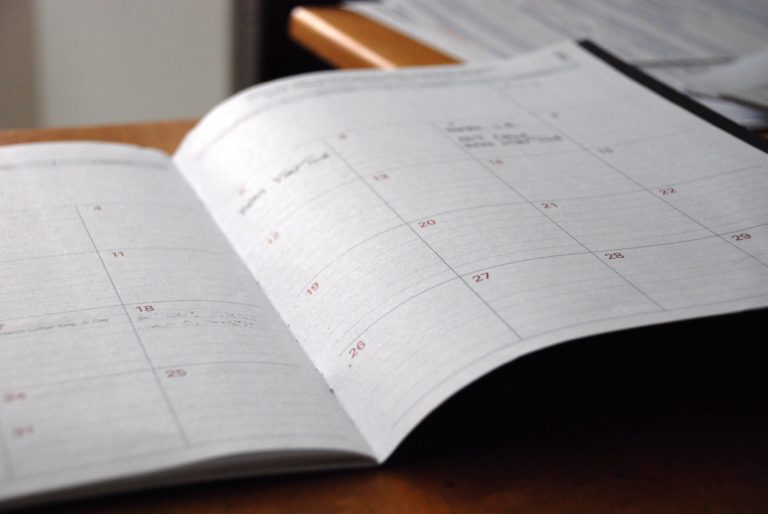Wondering what your options are for funding your app idea? What about monetizing it? From various funding models to the most common monetization strategies, the Guide to Funding & Monetizing Your App has the answers you're looking for.
As Digital Project Managers, we pride ourselves on our impeccable communication skills. Tactful and concise communication – both between you and your team, and you and your client – is vital to a project’s success. Occasionally, requests for valuable client contributions (like information or approvals) fall through the cracks. Have you ever wondered if your client missed your email? Maybe they’re just too busy to reply? So, naturally you follow up and low and behold a few days go by and still no response.
Unfortunately, this is a pretty common problem. It can also be a huge risk to the health of your project. Not being able to gather the information you need, when you need it, can wreak havoc on a project’s schedule and budget — not to mention your team’s workflow. If you’re a shop that works on multiple projects at once, it even has the potential to negatively affect motivation on other projects your team is committed to. Yikes.
So, how do you stop the ripple effect? Below are 3 steps I use to get the response you need from that elusive client:
Step 1: Understand and Care About Your Client’s Personality
As a Digital Project Manager you’re required to be highly organized with a skill set to balance schedules, resources, budgets, and timelines. But it’s also imperative for you to have soft skills: a high EQ (emotional intelligence) and the ability to “read a room”. Successful project management requires you to not only consider your client’s personality and communication style in your interactions but to actually care about it.
Take note of visual hints.
When you have the opportunity to meet your clients face-to-face, pay attention to their body language, personal style, and how they present themselves. These are helpful personality indicators. Sometimes it’s helpful to jot down a couple of points that you can refer to later on if need be.
Beki is dressed very professionally (full suit and high heels), yet she’s got a relaxed personality overall and uses casual language. Her body language indicates confidence in her knowledge and role (good posture, firm handshake, not afraid to speak up in her areas of expertise). I’d guess that Beki and I are about the same age.

Identify communication style.
In face-to-face meetings, phone conversations, or email communications pay attention to your client’s communication style and language choices.
Is Steve concise and to the point or is he a story-teller? Is Ali really serious or does she joke around? Does Sean use simple, straightforward language or does he have an extensive vocabulary?
Mimicking your client’s communication style and language choices helps them to more quickly and easily connect with you. For example, a client who writes quick and concise one-line emails will likely respond better to quick one line questions as opposed to longer, multi-request emails.
Pro Tip: Be aware not to act or speak in a manner that’s way outside your own natural style, you’ll risk coming off as insincere.
Step 2: Framing Your “Ask”
You’re a lot more likely to receive a helpful and complete response when you frame your request clearly. You’re also going to get a more prompt response if you provide your client with all of the related information they may need in order to answer your question. For example, you text your friend asking them to get you a coffee:
Hey Joe, on your way to my place can you please pick me up a coffee?

If Joe says yes, think about how many other questions he needs to ask you to make sure you get what you need. What kind of coffee? What size? How do you take it? Is he supposed to buy it for you? Alternatively, you could text him:
Hey Joe, on your way to my place, could you please stop at Starbucks and pick me up a grande almond milk latte? Please get something for yourself as well and I’ll give you some cash once you get here.
This way, Joe has all of the information he needs to confidently say yes, no, or offer an alternative solution. When you ask a specific question, you will receive a specific answer which eliminates assumptions and risks. This is particularly valuable when it’s your project, and your budget (or your coffee) on the line.
Pro Tip: When you send a client request, include a specific date (and even time if necessary) that their response is needed by. This will clearly indicate the priority level to them, and gives you a deadline to diarize follow-up.
Step 3: Consider Your Client’s Circumstances
Still no reply? It might be helpful to remember that your project is likely one of many on your client’s plate, but it’s easy to lose sight of that fact when we are immersed in it daily. It’s important to recognize and consider your client’s workload (and personal circumstances if applicable) so you can sympathize with reasons why they may not get back to you on time.
Hi Whitney,
It looks like you’re a busy lady these days! I can see from your ‘out of office’ that you’ve been travelling a lot for work. I know when you’re in and out of the office a lot it’s easy for little things to fall through the cracks, so I just thought I’d send a friendly reminder that we’re still waiting on those server credentials I requested via email (below for your reference) last week. In order to keep our project on schedule I’ll need this information from you on or before Friday.
I don’t want to clog your inbox up with unnecessary messages, so I’ll leave it with you to contact me at your earliest convenience. Please note that if we don’t hear from you by Friday your project will be considered ‘paused’ and your launch date will have to be rescheduled in our next available timeslot.
I look forward to your response. Of course, if there’s anything I can do to assist you, please don’t hesitate to reach out.
In my personal experience, a message like the one above has been proven time and again to garner a pretty zippy response. This structure and language is successful for a few reasons:
First, you’ve removed the need for Whitney to be defensive. We’re all human, we’re all busy, and from time to time we all forget things. Think about what kind of message you’d want to receive in the same situation.
Second, you’ve clearly expressed your request. Whitney knows the what, why, and when of your ask.
Third, you’ve identified the risk and consequence if Whitney is unable to reply in time. This is important because not only will it eliminate a nasty surprise in case you need to implement the consequence down the road, but often sharing that consequence illustrates the importance of your request, prompting a speedy reply in a lot of cases.
Last, you leave the ball in your client’s court, so to speak. Many Digital Project Managers are juggling multiple projects with multiple stakeholders. By leaving the responsibility for follow-up with your client you can place your focus elsewhere while eliminating budget burn on one-sided communication.

Pro Tip: Set a calendar reminder (or task in your Project Management software) to follow up with your client a week or two after the deadline you’ve given. If you haven’t heard from them at this point it’s now appropriate to touch base and enforce the consequences you identified in your previous message.
So there you have it – 3 tips we use here at Paper Leaf to get a response from those elusive project clients. Give it a go and let us know how it worked for you – or share your tips – on Twitter!